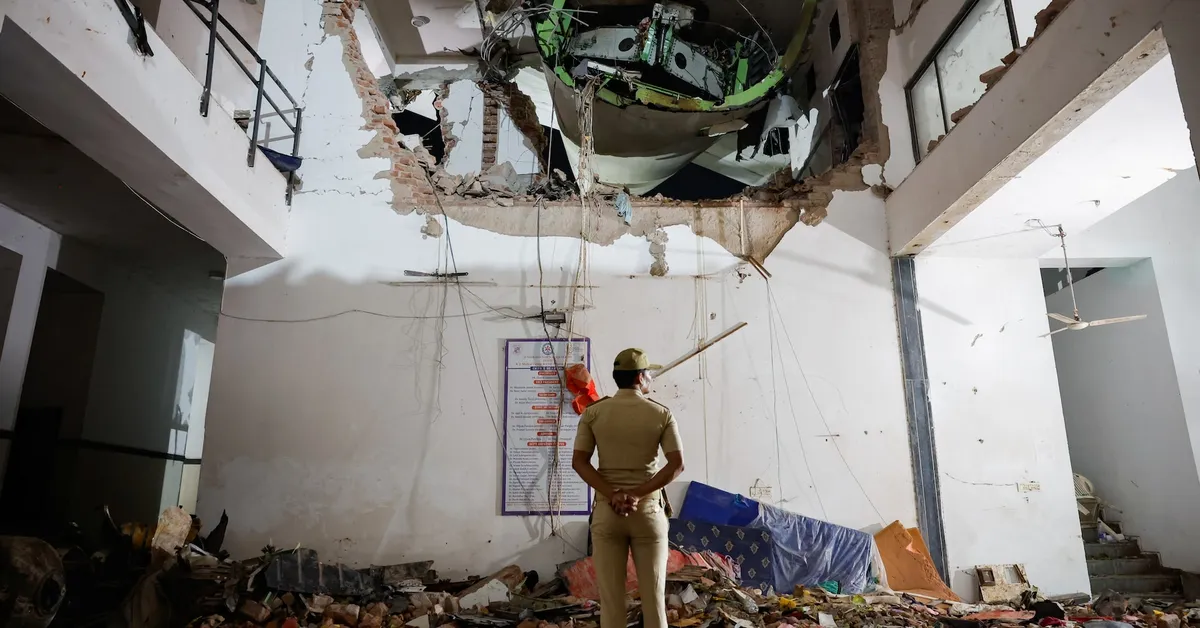
On July 17, reports surfaced regarding the tragic crash of an Air India flight that occurred on June 12 in Ahmedabad, India, claiming the lives of 260 individuals. According to a source briefed on the preliminary assessment by U.S. officials, a cockpit recording of the pilots' dialogue suggests that the captain may have intentionally cut the fuel supply to the plane's engines. This assessment, however, is not yet formalized, and the investigation remains ongoing.
The U.S. assessment emphasizes that the investigation into the June 12 crash is still in its early stages, and definitive conclusions have yet to be reached. The source noted that while there is no cockpit video recording to clearly identify whether the captain or first officer manipulated the fuel switches, the discussion captured in the cockpit recording leans towards the captain's involvement.
The Aircraft Accident Investigation Bureau (AAIB) of India, which is spearheading the investigation, released a statement expressing concern over certain sections of the media drawing premature conclusions based on selective reporting. They reiterated that air crashes typically involve multiple contributing factors and that a comprehensive report is expected within a year.
The preliminary report from the AAIB indicated that a conversation between the pilots revealed one questioning the other about the fuel cutoff, to which the other pilot denied involvement. While the report did not specify which pilot made which remarks, it did highlight the extensive flying experience of First Officer Clive Kunder, who had logged 3,403 hours, compared to Captain Sumeet Sabharwal's experience.
Significantly, the report noted that the fuel switches transitioned from "run" to "cutoff" just after takeoff, but it did not clarify how this change occurred. Almost immediately after the aircraft became airborne, closed-circuit television footage captured the deployment of a ram air turbine, indicating a loss of engine power.
After reaching an altitude of 650 feet, the aircraft began to lose thrust and subsequently started to descend. Although the fuel switches for both engines were reset to "run," the plane was too low and too slow to execute a recovery, according to aviation safety expert John Nance. The aircraft tragically clipped trees and a chimney before crashing into a building located on a nearby medical college campus, resulting in the deaths of 19 people on the ground and 241 of the 242 passengers and crew on board.
In an internal memo released on Monday, Air India CEO Campbell Wilson stated that the preliminary report found no mechanical or maintenance issues, confirming that all necessary maintenance procedures had been completed. Following the report's publication, both the U.S. Federal Aviation Administration and Boeing issued notifications asserting that the fuel switch locks on their aircraft are functioning safely.
The U.S. National Transportation Safety Board (NTSB) has also been involved in the investigation, with Chair Jennifer Homendy being thoroughly briefed on all relevant details, including the cockpit voice recording and flight data. Homendy emphasized the importance of learning from such rare incidents to enhance aviation safety, stating that understanding whether any immediate safety issues exist is crucial.
The Air India crash has reignited discussions regarding the potential implementation of flight deck cameras, also known as cockpit image recorders, on commercial airliners. Expert John Nance voiced that having video footage of the cockpit during the flight could have significantly aided the investigation's clarity.
As the investigation continues, all contributing factors will be meticulously examined to ensure a comprehensive understanding of the incident and to improve safety measures in the aviation industry.